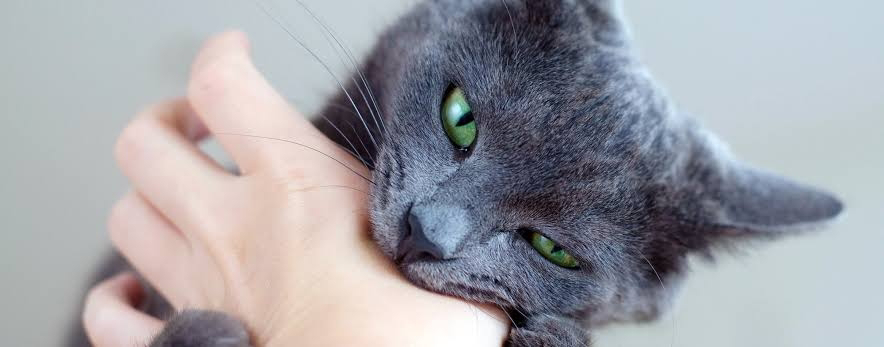Cats are adorable and cuddly creatures, but they can also bite when they are scared, angry, or playful. Cat bites may seem harmless, but they can actually be very dangerous, both to other animals and to humans. In this blog post, we will explain what cat bites are, how common they are, and why they can be dangerous. We will also discuss the different types of infections and diseases that can result from cat bites and provide some tips on how to prevent cat bites and what to do if you get bitten by a cat.
How Common are Cat Bites?
Cat bites are quite common, especially among people who own or interact with cats. According to a study, cat bites make up 1% of all emergency room visits in the United States. Another study estimated that there are about 400,000 cat bites per year in the United States, resulting in about 66,000 hospitalizations.
Why are Cat Bites Dangerous?
Cat bites are dangerous because they can cause infections in up to 80% of cases. This is because cats have a lot of bacteria in their mouths, such as Pasteurella multocida, Staphylococcus aureus, Streptococcus spp., and Capnocytophaga spp. These bacteria can enter the wound and multiply, causing inflammation, pus, fever, and other symptoms. Cat bites can also transmit diseases, such as cat scratch disease, rabies, and tetanus, which can have serious and sometimes fatal consequences.
What are the Different Types of Infections and Diseases that can Result from Cat Bites?
Some of the most common and serious infections and diseases that can result from cat bites are:
- Pasteurella multocida infection: This is the most common infection caused by cat bites, affecting about 50% of cases. It can cause cellulitis, abscesses, sepsis, and heart valve infections. The symptoms include pain, swelling, redness, warmth, and drainage at the bite site, as well as fever, chills, and malaise. The infection can spread to the bones, joints, lungs, and brain, causing osteomyelitis, arthritis, pneumonia, and meningitis. The infection can be treated with antibiotics, such as amoxicillin-clavulanate, doxycycline, or ciprofloxacin.
- Cat scratch disease: This is a disease caused by the bacterium Bartonella henselae, which is carried by fleas that infest cats. It can be transmitted by cat bites, scratches, or licking of open wounds. The symptoms include a small bump or blister at the bite or scratch site, followed by swollen lymph nodes, fever, headache, fatigue, and loss of appetite. The disease can also affect the eyes, liver, spleen, and nervous system, causing conjunctivitis, hepatitis, splenomegaly, and encephalopathy. The disease can be diagnosed by blood tests, culture, or PCR, and can be treated with antibiotics, such as azithromycin, doxycycline, or rifampin.
- Rabies: This is a viral disease that affects the central nervous system of mammals, including cats and humans. It can be transmitted by the saliva of an infected animal through a bite, scratch, or lick of a mucous membrane or a wound. The symptoms include fever, headache, nausea, vomiting, agitation, anxiety, confusion, hallucinations, and hydrophobia. The disease can progress to paralysis, coma, and death. The disease can be prevented by vaccinating cats against rabies and by administering post-exposure prophylaxis to humans who have been exposed to a potentially rabid animal. The post-exposure prophylaxis consists of a series of injections of rabies immunoglobulin and rabies vaccine.
- Tetanus: This is a bacterial disease caused by the toxin of Clostridium tetani, which is found in soil, dust, and animal feces. It can enter the body through a wound, such as a cat bite, and affect the nerves and muscles. The symptoms include muscle spasms, stiffness, lockjaw, difficulty swallowing, and respiratory failure. The disease can be fatal if not treated promptly. The disease can be prevented by vaccinating humans against tetanus and by administering tetanus immunoglobulin and tetanus vaccine to humans who have a wound that is contaminated with dirt or animal feces.
How to Prevent Cat Bites and What to Do if You Get Bitten by a Cat?
The best way to prevent cat bites is to avoid provoking cats, especially if they are unfamiliar, aggressive, or in pain. You should also keep your cats indoors, away from other animals and potential sources of infection. You should also make sure that your cats are vaccinated against rabies and other diseases, and that they are treated for fleas and worms regularly.
If you get bitten by a cat, you should do the following:
- Clean the wound with soap and water, and apply pressure to stop the bleeding.
- Cover the wound with a sterile bandage, and elevate the affected area if possible.
- Seek medical help as soon as possible, especially if the wound is deep, large, or infected, or if the cat is unknown, stray, or rabid.
- Tell your doctor about the cat bite, and provide any information about the cat, such as its appearance, behavior, and vaccination status.
- Follow your doctor’s instructions on how to care for the wound, and take any antibiotics or vaccines that are prescribed to you.
- Monitor the wound for any signs of infection or disease, such as pus, redness, swelling, pain, fever, or lymph node enlargement, and report them to your doctor immediately.
Conclusion
Cat bites are not only painful, but also dangerous, as they can cause infections and diseases that can have serious and sometimes fatal consequences. Therefore, it is important to prevent cat bites and to treat them properly if they occur. By following the tips we have provided in this blog post, you can protect yourself and your cats from the dangers of cat bites.


